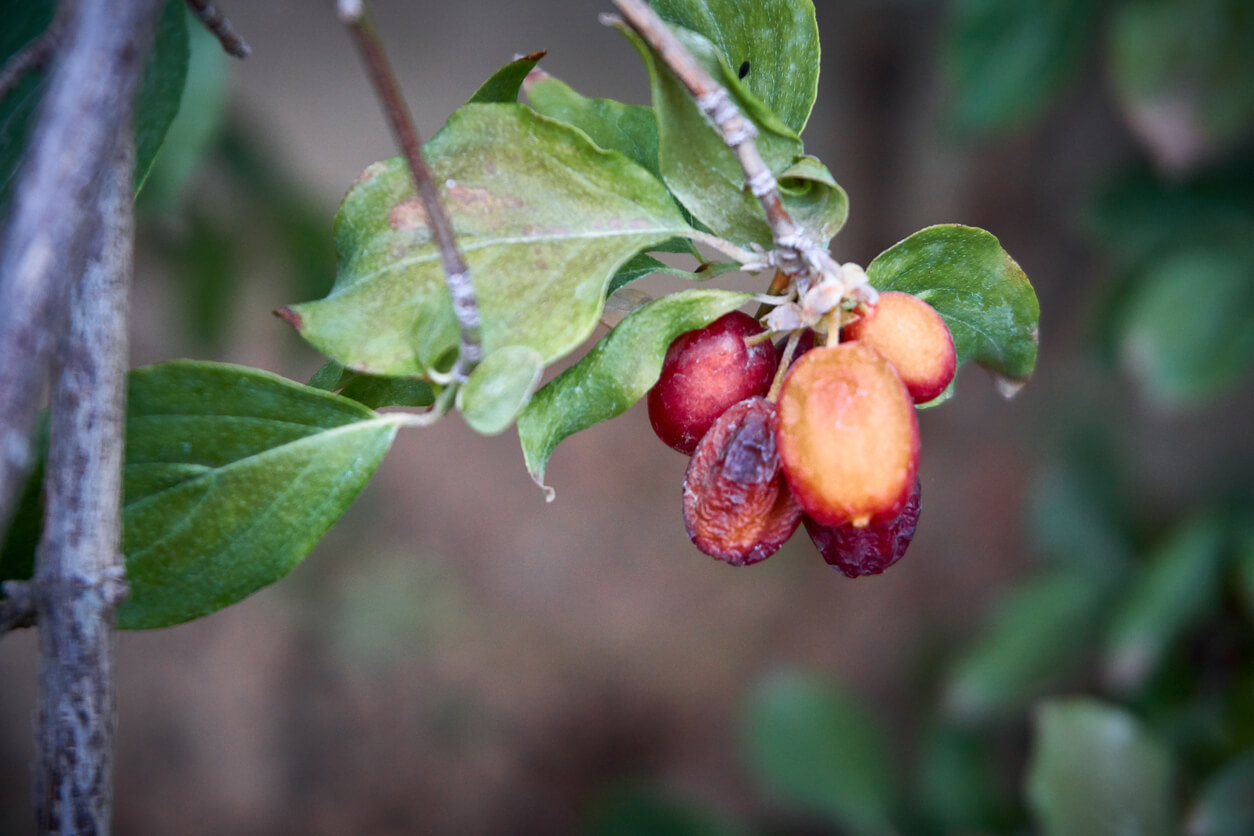
Devastated cranberry fruits as a result of long time drought and strong heat.
Pests on your cranberries, left unchecked, can damage and destroy your developing plants. Keeping a close watch on your plants during regular daily inspections will help you spot any pests before they can do irreparable harm. Healthy cranberry vines can bounce back from pest damage if you catch the pests early.
A few notes about prevention:
- Don’t overwater.
- Use floating row covers when plants are young.
- Place sticky traps to catch pests early.
Spot the symptoms of cranberry plant pests
Check your cranberry plants for these symptoms that come from pests on the prowl.
| Symptoms | Pest |
| Flower buds hollowed out before they bloom | Cranberry weevil |
| Berries turn red prematurely; fruit shrivels up; fruit is hollowed out; entry and exit holes visible | Cranberry fruitworm |
| Leaves curl into a cup shape | Cranberry tipworm |
| Skeletonized leaves | Cranberry flea beetle |
| Webbing on leaves and vine tips | Black-headed fireworm |
| Damage to roots, runners, and stems | Cranberry girdler |
How to treat pests on cranberries
Here are some proven ways to get rid of pests on your cranberries. Choose the best treatment for the type of pests invading your plants.
- Pick off the pests. Use your garden gloves to remove the pests by hand. After removal, destroy pests by drowning them in a bucket of soapy water or crushing them with your foot. Handpicking isn’t efficient or practical for very small pests but works well with larger pests.
- Trap them. Use sticky traps and pheromone traps to snag insects attacking your plants.
- Apply insecticidal soap. Insecticidal soap is organic. The potassium salts in insecticidal soap help remove an insect’s protective waxes, causing destruction of insect membranes and killing them. Mix the soap with water to create your solution and apply directly to insects on any plants. While insecticidal soap is less apt to affect other organisms, certain plants might be sensitive to the soap and can suffer leaf burn.
- Apply horticultural oils. Combine plant- or petroleum-based oils with water to produce horticultural sprays. Neem oil, for example, is derived from seed extracts of the neem plant. Oil-based sprays block an insect’s air holes, interfere with an insect’s metabolism, disrupt insect feeding, and inhibit insect growth. Like insecticidal soaps, horticultural oils can cause plant injury if not properly diluted.
- Make your own pest spray. You can make your own pest spray with benign materials. Mix 1 tablespoon of baking soda, 1/2 teaspoon of a mild dish detergent, and 2 1/2 tablespoons of olive oil in a gallon of water to make a solution that will repel all kinds of bugs, as well as a fungicide for blight and mildew on cranberry plant leaves. Shake it well in your bottle before spraying and repeat every week for it to be continuously effective.
- Diatomaceous Earth (DE). Sprinkle DE at base of plants and between plants. Many pests cannot cross over this barrier without dying.
Do pests attack your cranberries every year? How do you handle removing them—and even preventing them in the first place? Please tell us how you treat your cranberries to avoid pests by commenting below.


 Previous
Previous

